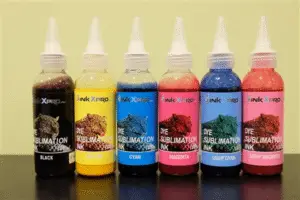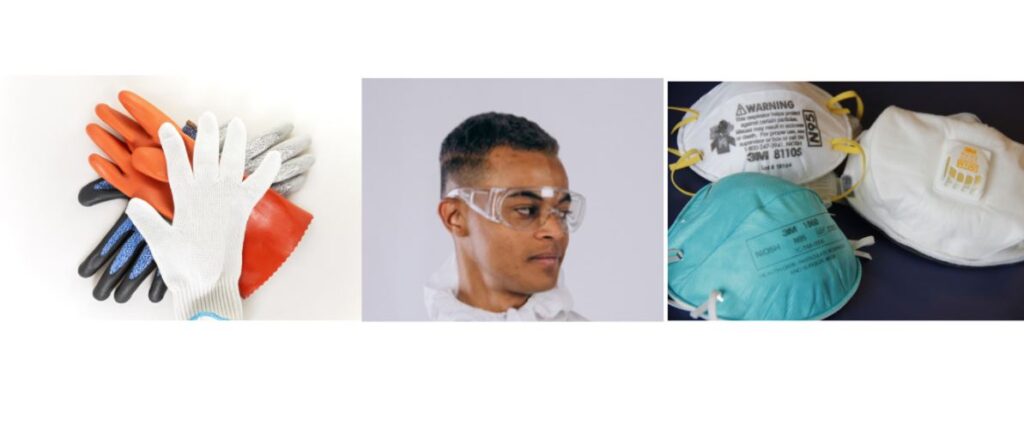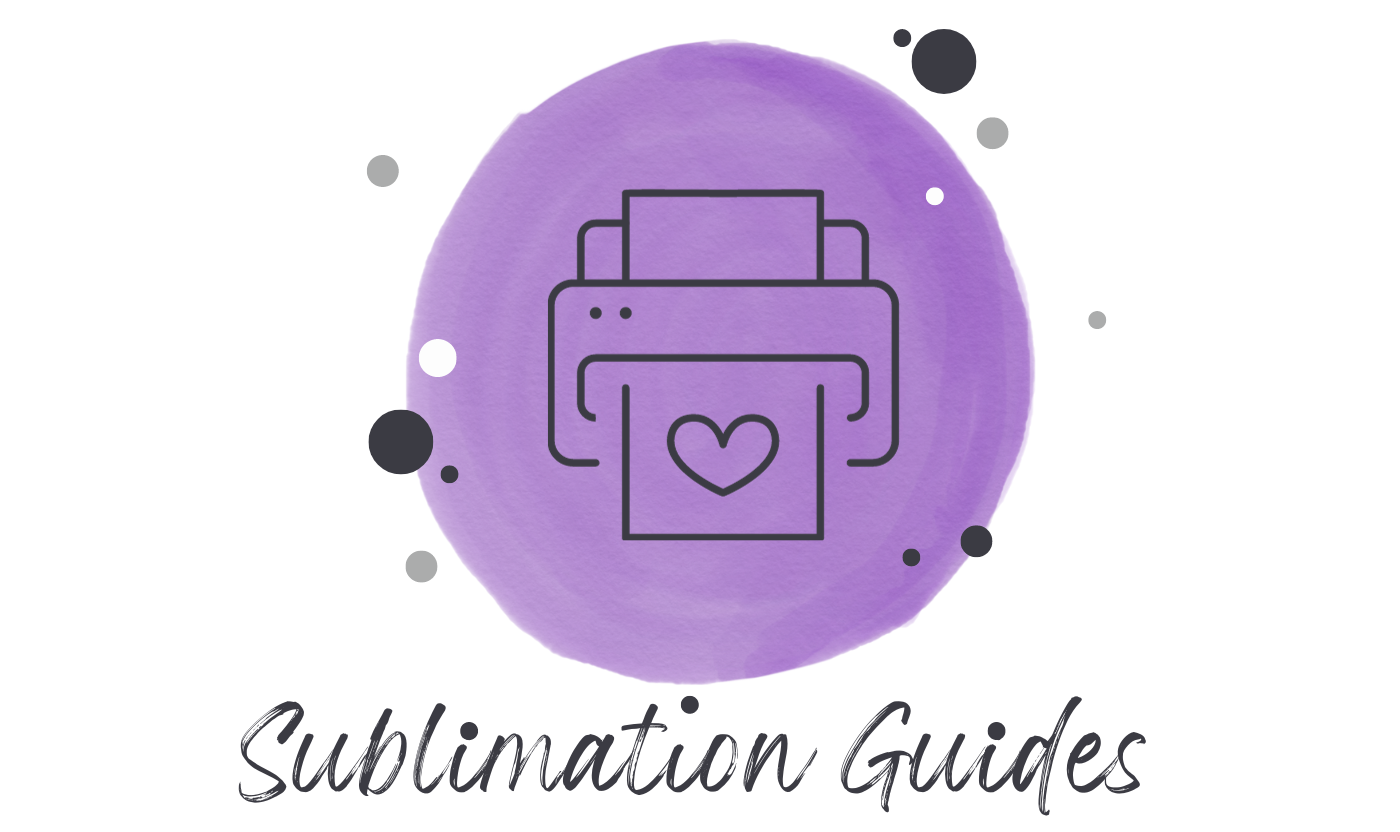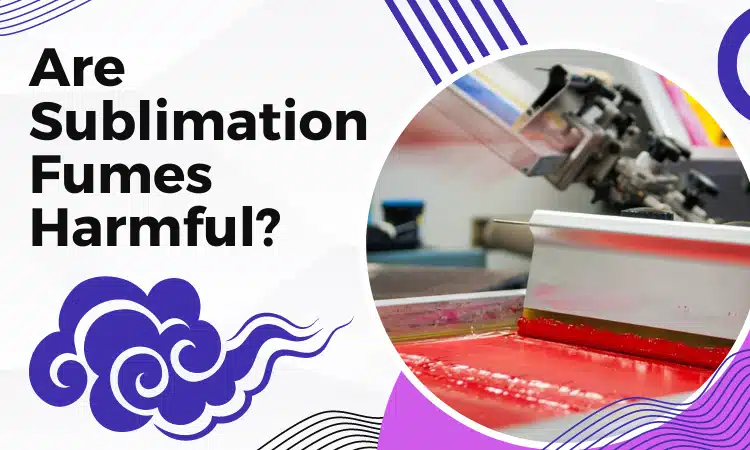Sometimes, during the sublimation process, when you pull up the heat press, you may notice a small amount of fumes or steam. Managing environmental conditions and equipment layout is crucial for efficient sublimation production. It’s normal to get concerned about your health and safety when this happens. Proper ventilation and personal protective equipment (PPE) are essential safety precautions to minimize risks associated with inhaling potentially harmful fumes.
So, are sublimation fumes harmful?
Sublimation fumes can be harmful and can cause health hazards if you use low-quality sublimation ink and cheap sublimation plastics. These fumes can cause health issues, including respiratory and eye problems, due to volatile organic compounds (VOCs) present in the sublimation ink. To reduce the risks, you should install proper ventilation, use high-quality ink, and wear masks.
To learn more about the risks of sublimation fumes and how to reduce them, keep reading.
Contents
When Do Sublimation Fumes Appear?
In sublimation printing, sublimation fumes occur when the dye changes from a solid to a gas during the heat transfer process. Here’s how it happens:
Heating Phase:
- Temperature: The sublimation dye on the transfer paper is heated to a high temperature (around 350°F to 400°F or 175°C to 205°C). This heat causes the dye to turn into gas.
Pressure Application:
- Heat Press: A heat press machine applies both heat and pressure to the transfer paper and the material (like fabric, ceramic, or metal). The pressure helps the gas dye to penetrate the surface of the material effectively.
Contact Time:
- Dwell Time: The heat and pressure are applied for a specific time, usually between 30 to 60 seconds. During this time, the solid dye turns into gas and embeds into the material.
Are Sublimation Fumes Harmful?
Although there is only a small amount of fumes produced, sometimes, it still can be harmful to inhale. High-quality sublimation ink should not cause any problems. But if you use cheap sublimation ink and plastic, the fumes produced by those can be hazardous.
Are sublimation fumes toxic? Yes, these fumes can be toxic.
How To Reduce The Harmfulness Of Sublimation Fumes?
The inks used in sublimation printing contain volatile organic compounds (VOCs), such as N-butyl acetate and 2-methoxy-1-methylethyl acetate.
Breathing in these fumes can lead to respiratory problems like coughing, wheezing, shortness of breath, and chest pain. So, if you’re wondering if sublimation is safe to breathe, the answer is no, it’s not completely safe.
These fumes can also cause headaches, dizziness, and fatigue. Inhaling a lot of them can make you feel nauseous or even vomit. They can irritate your eyes, making them red, itchy, and watery.
Over time, being around these fumes a lot can increase the risk of serious health problems. However, since you’re not usually exposed to them for long periods during sublimation, you’re more likely to experience short-term issues rather than severe long-term problems.
How To Reduce The Harmfulness Of Sublimation Printing Fumes?
Sublimation is a process where certain solid substances transition directly to a gaseous state without entering a liquid phase when heated sufficiently.
To minimize the harmfulness associated with the sublimation fumes, you can take the following steps.
1. Use High-Quality Sublimation Ink:

Use high-quality sublimation ink to enhance the overall printing process and minimize the harmfulness of sublimation fumes. The high-quality ink is formulated to contain fewer volatile organic compounds (VOCs) than lower-quality ink. It means that it will produce fewer harmful fumes during the sublimation process.
Here is some good-quality sublimation ink.
| Product | Feature | Compatible with |
| Koala Sublimation Ink | This Anti-UV formulated sublimation ink is very high-quality and there will be no toxic fumes. | ET2720, ET2750, ET2760, WF3540, ET7720, WF3520, WF3640 WF3620, ET7710, C88 C88+, etc. |
| Super-Sub SUQ SBR 300 ink | This high-quality sublimation ink is toxic-free, it also provides a highly sharp color in the substrate. | Brother DCP-T300, DCP-T310, MFC-T800W, DCP-T510W, DCP-T500W, MFC-T910DW and MFC-T810W etc. |
| InkXPro True Color Sublimation Ink | It’s A high-quality, non-toxic sublimation ink that is a safe option for sublimation printing. | C68, C88, C88+, WF 3620. WF3520, WF7520, WF3640, WF3540, and WF7510 |
| Unlimited Ink Sublimation Ink | This brand provides vibrant and permanent colors for your sublimation project. | Virtuoso SG400, Ricoh 3110DN, 7100DN, SG800, 3110DNW |
Also, you should choose high-quality material including the best paper for sublimation to reduce the fume toxicity.
2. Wear Personal Protective Equipment: Essential Safety Precautions

When working with sublimation printing, wear personal protective equipment (PPE) including masks and goggles to protect yourself from any harmful fumes. Safety concerns include the risks of inhaling fumes and the importance of proper ventilation systems to minimize exposure.
Also ensure you follow safety protocols, including the use of gloves if necessary
3. Ensure Proper Ventilation:
Do you need ventilation for sublimation? Of course, you do. Make sure that the sublimation printing is done in a well-ventilated area. Installing an exhaust system near the heat press is crucial to control smells and fumes emitted during the production process.
This will help to prevent the accumulation of any harmful fumes that may be produced during the process. Here are some tips for you.
- Choose a room with windows that can be opened or a space that has proper ventilation systems installed, such as an exhaust fan.
- You can keep the door open if possible for better air circulation.
- A portable air purifier can be used to help remove any harmful fumes from the air. This is especially useful if working in a small or enclosed space, where it may be difficult to ensure proper ventilation. Also, many portable air purifiers have aromatherapy features. It can also help reduce the neoprene stinks during the sublimation process.
- If possible, use a fume hood while sublimation printing to help reduce the number of harmful fumes that are released into the air.
Here are some fume hoods and air purifiers you can check out.
Ventilation hoods are good for capturing and venting fumes outside. This is especially useful for larger or commercial setups.
| Product | Feature |
| Broan-NuTone Ductless Range Hood | The easily replaceable charcoal filter and stainless steel body make it very easy to maintain. |
| Cosmo Slim Ductless Vent | This vent hood is a high-quality one at a very affordable price. |
| Comfee F13 Range Hood | This hood contains a 2-speed exhaust fan that will instantly remove the fumes and improve the air quality of your printing space. |
| Levoit Air Purifiers | Strong filtration performance, multiple filter choices, works quietly. |
| Germ Guardian Air Purifier | This purifier includes a HEPA filter, UV-C light technology, and multiple speed settings. |
| Honeywell HPA200 HEPA Air Purifier | For large rooms, provides cleaner air in minutes, 3 cleaning levels. |
4. Set Proper Sublimation Machine Temperature:
When performing heat transfer using a sublimation machine, make sure that the temperature of the machine is properly set for the specific substrate being used. Certain substrates, like neoprene, require specific temperature settings to avoid issues such as strong odors.
If the temperature is too high or too low, it can cause the production of fumes during the transfer process. Here is the appropriate temperature for common sublimation materials.
| Product | Temperature |
| Polyester fabric | 200 to 205° C |
| Ceramic plate | 190 to 200° C |
| Ceramic mugs | 190 to 200° C |
| Metal tumbler | 160 to 170° C |
| Neoprene fabric (vapor foam kit, mouse pads, coasters) | 200 to 205° C |
| Metals (Phone covers, keyring, metal plates) | 190 to 200° C |
Using the right temperature is also important to reduce basic sublimation problems. For example, stuck sublimation paper on a tumbler.
This is how the risks of sublimation fumes can be reduced.
FAQ’s
Is Sublimation Safe for Kids?
Yes, sublimated products for kids including t-shirts, bibs, water bottles, and pencil boxes are safe for kids. High-quality ink significantly improves the quality of dye sublimation transfers, ensuring vibrant and long-lasting designs. However, you should keep children away from the sublimation device during the operation as the fumes can be harmful to kids.
Are Sublimation Mugs Safe To Drink From?
Yes, sublimation mugs are safe to drink from as long as they are made from food-grade materials. The sublimation itself doesn’t make the mug unsafe as the polymer coating on it prevents the ink from leaching into the drink.
What Are The Disadvantages Of Sublimation?
Disadvantages include the potential for harmful fumes if low-quality materials are used, the need for specific equipment and substrates, and possible issues with color accuracy and longevity if not done correctly.
Conclusion
I hope I could answer your question: Are Sublimation fumes harmful or not. Whether you are doing sublimation projects as a hobby or regularly as a profession, safety should always come first.
If you notice any irritation in your nose, eyes, mouth, or skin during the sublimation process, immediately consult a doctor.
That’s all for now. Have a nice day and be safe!

Emily loves making things special.
She’s also a mom and a wife who enjoys crafting and runs a small business from her home. She knows that the little things can make a house feel like a warm and loving home. This belief has led her to explore the exciting world of sublimation, a crafty way to add a personal touch to just about anything. Her website shares valuable information about sublimation, her crafty ideas, and tips.


